Meher Castelino charts the evolution of men’s fashion in the country and finds out how the 21st century metrosexual males have become adventurous and stylish for the better
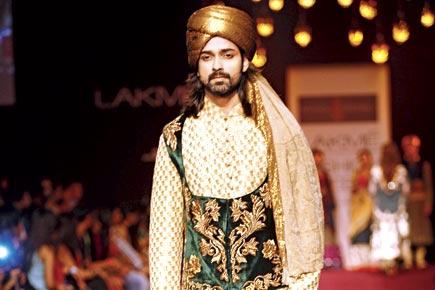
Indian menswear has evolved in the last 25 years. Historically, Indian men have always been very fashion conscious and cut impressive figures with their flowing robes, regal turbans laden with jewellery and stately coats.
ADVERTISEMENT
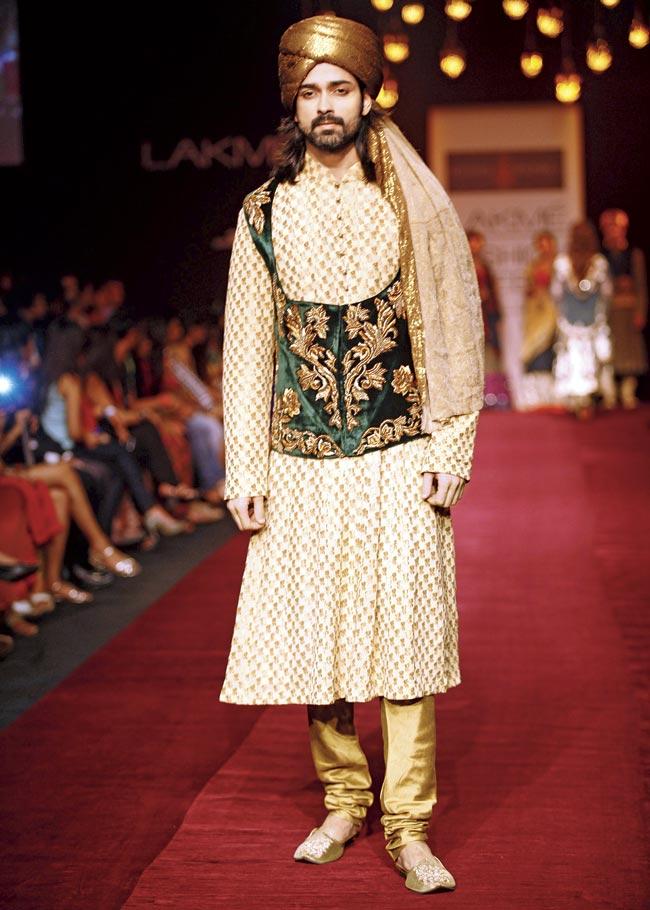
A creation by Shyamal and Bhumika, who are known to offer chic ethnic wear
Post-independence, it was the shirt/pant/jacket that was the staple wear for the upwardly mobile executives while the common man opted for kurta pyjamas and shirts and trousers.
The fashion scene for men gradually started changing in the ’90s. These changes were clearly noticeable in the 2001 Lakme Fashion Week where male models teamed colourful dhotis with sherwanis and sported bright vibrant hues, a far cry from monochromes.
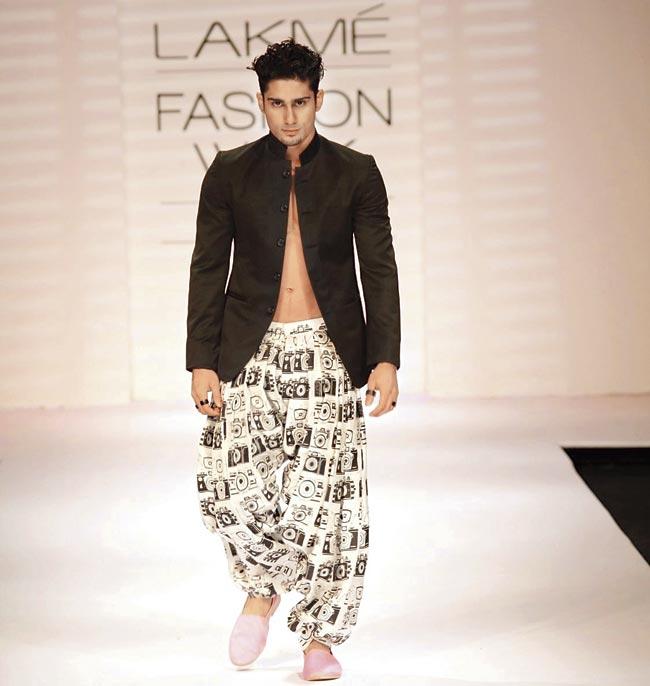
Dhoti trousers with kitschy prints and a jacket by designer Masaba
Off the rack
To match popular Indian brands of the ’60s, ’70s, and ’80s, the menswear segment comprising labels such as Zodiac, Liberty, Armour and Playboy, moved into top gear in 1990 as foreign labels such as Louis Philippe, Van Huesen, Arrow, Pepe and Allen Solly brought interesting touches to men’s clothing. Soon home-grown fashionable ready-to-wear labels such as Mufti, Killer, Spyker, Flying Machine and many more successfully flooded the market.
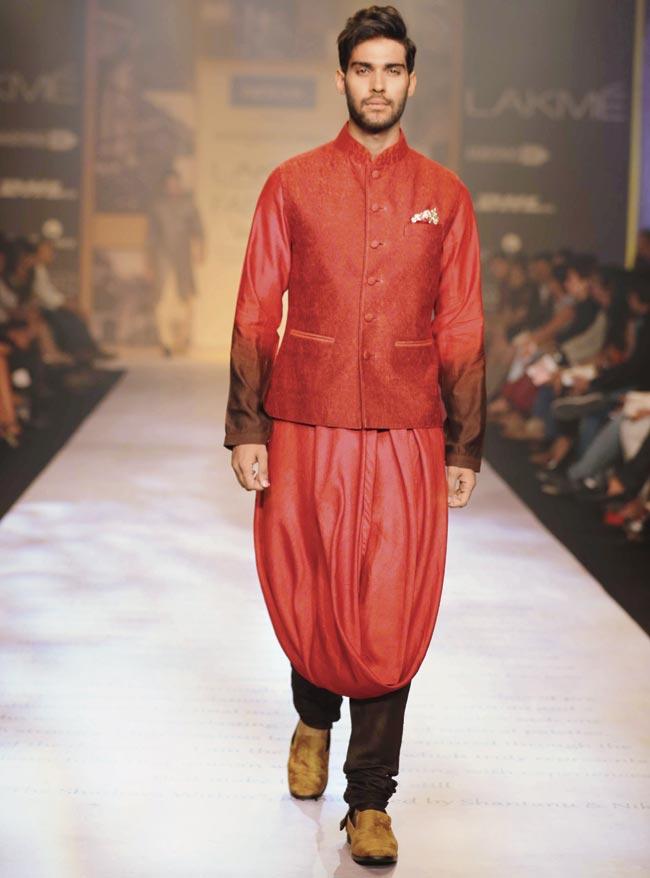
A creation by one of the top couturiers, Shantanu and Nikhil
The designer touch
The advent of men’s designer wear labels, pioneered by Krishna Mehta in 1987, gave a stylish nod to menswear and gradually moved away from the corporate wear, T-shirts and jeans.
Today, menswear has evolved and is no longer restricted to western attire but has a rich and varied ethnic offering from top couturiers including Tarun Tahiliani, Rohit Bal, Manish Malhotra, JJ Valaya, Shantanu and Nikhil and Shyamal and Bhumika.
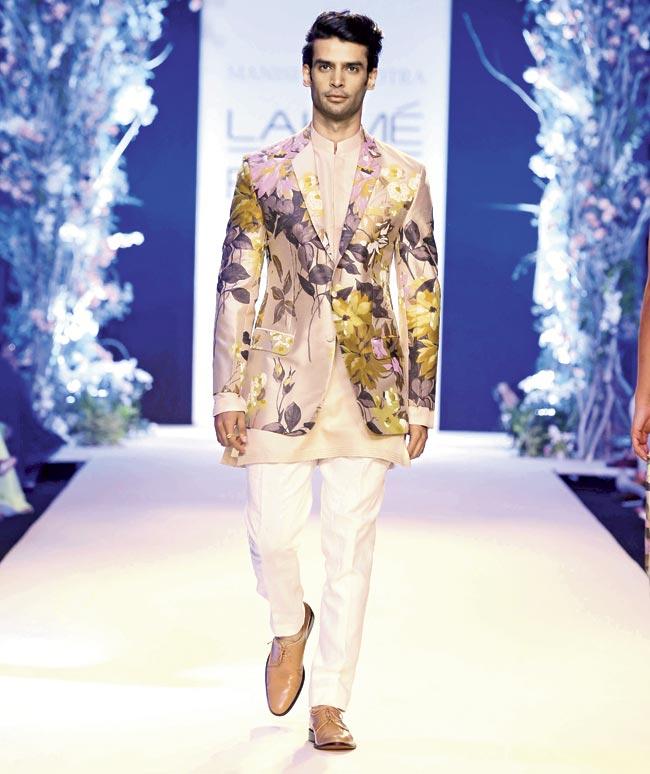
A Manish Malhotra creation at the Lakme Fashion Week 2014
In the 21st century, avant garde flamboyant creators brought in the metrosexual, androgynous unisex look for men’s clothing. Today, Troy Costa’s colourful suits with skinny silhouettes appeal to fashion conscious celebs such as choreographer Remo D’Souza.
Ken Ferns and Sayantan Sarkar put their men in prints while Narendra Kumar adds embellishments and a vibrant colour palette along with a mix of net over prints for jackets. Aarti Vijay Gupta and Masaba Gupta dress men in kitschy prints for jackets and dhoti trousers.
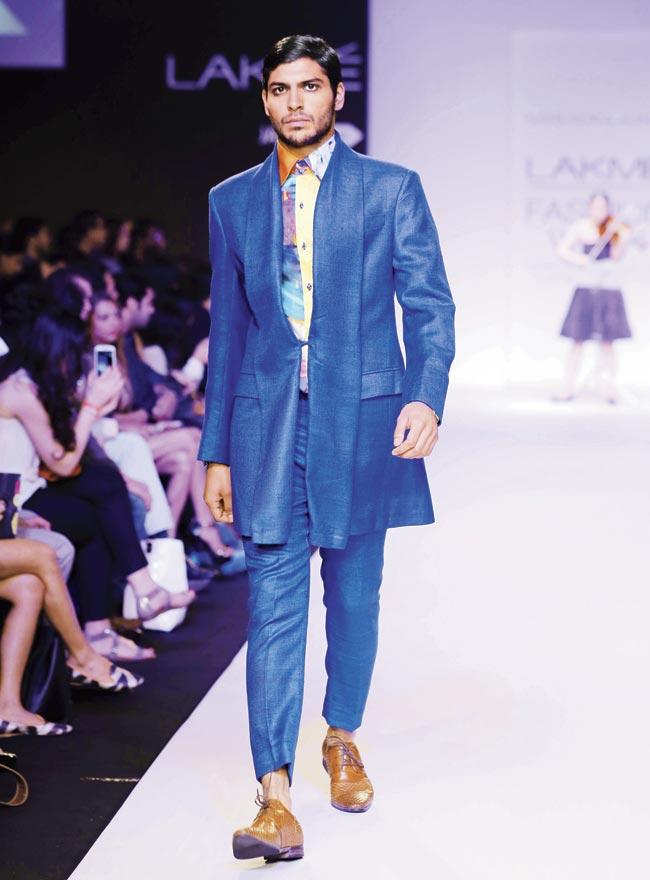
Designer Narendra Kumar adds vibrant colours and embellishments to his creations
Designer Digvijay Singh says, “Indian men were stylish in the ’60s and ’70s but in the ’80s and ’90s they lagged behind. However, they are now catching up in the 21st century and are experimenting with designs and prints.
My collections have a marked Indian touch in natural fabrics with techno weaves. Bright colours like mint and pink are in.” Dhruv Kapur does not hesitate to send his male models on ramps in skirts or maxis with duality in each garment, because he believes fashion is unisex.
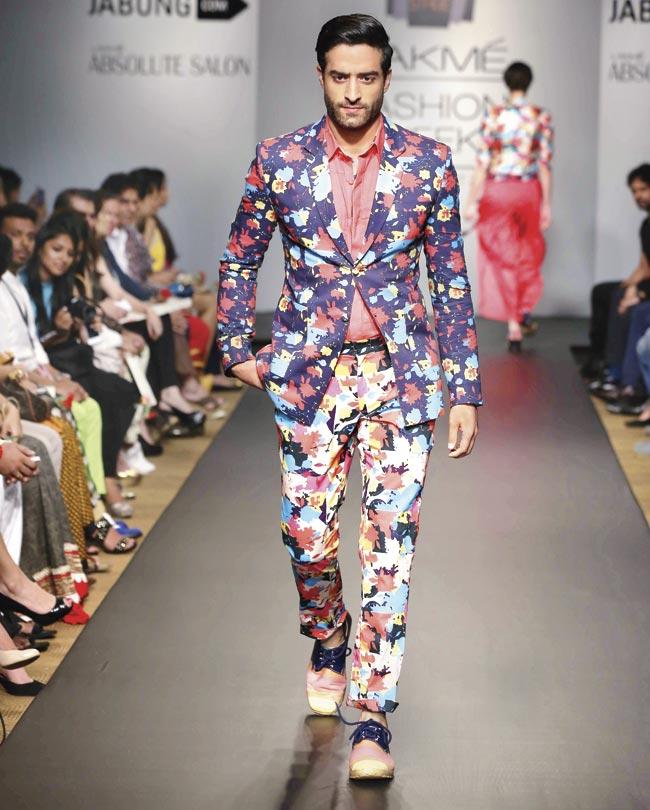
A three piece suit by Sayantan Sarkar who is known to put his men in prints
He says, “Indian men are a couple of decades behind, stuck in the basics and are just waking up to fashion. International men’s wear has moved very fast with great cuts, colours and style. My aim is to present unisex designs, which both sexes can wear. I dream up my collections out of functional need.”
Men’s wedding trousseaux are as glitzy and colourful as those of their female counterparts. Heavily encrusted sherwanis and Jodhpuri jackets often outshine the bridal lehengas. Silhouettes are now varied for trousers, jackets, shirts, salwars, kurtas, sherwanis and bundgalas offering an Indo-Western fusion look or the pure bespoke touch.
While Western trends are followed for corporate wear, ethnic wear has evolved as per designer and customer demands. Tony Singh from The Designer Studio says, “Men don’t want glittering bundgalas, which they can wear just once, but want more options from their attire.
Now they are willing to experiment with fusion styles while drab conformist fashion is out.” Divya Kulkarni, a marketing executive from Aza, says, “Silks, rich luxurious fabrics with embellishments like chikan work, pleats, pin tucks and delicate work are favoured by men.”
What men wear
Kabir Soni, a 33-year-old entrepreneur says, “I love colours, prints and checks. My suits are single-breast and custom tailored. Zippers, metallic detailing, browns and greys are not for me. I don’t follow trends but balance my dressing sense with comfort and casual chic.”
Bhavik Dattani, (34), director of espelho Bags, says, “I like stylish clothes with detailing like contrast colours and piping. Some of my suits are tailored especially for me.” It looks like the fashionable 21st century Indian man has finally arrived.
 Subscribe today by clicking the link and stay updated with the latest news!" Click here!
Subscribe today by clicking the link and stay updated with the latest news!" Click here!






